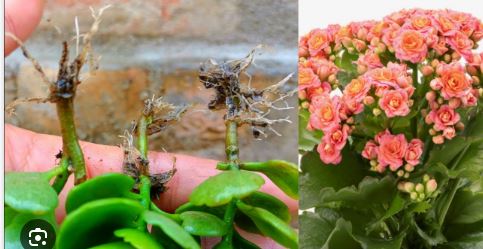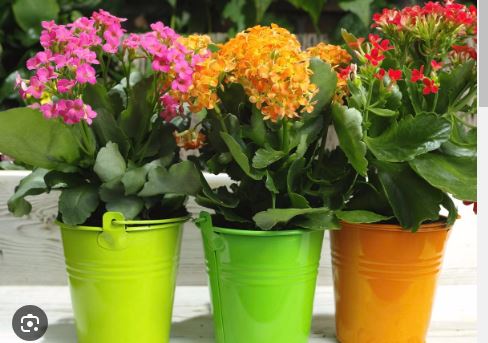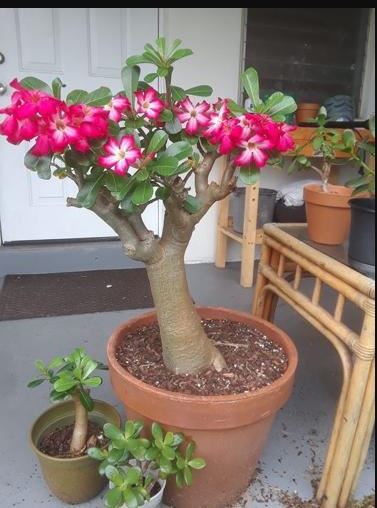Learn how to propagate kalanchoe in water! This easy method is perfect for beginners and allows you to multiply your favorite kalanchoe plants for free.
Have you ever wished you could effortlessly multiply your vibrant kalanchoe plants? Perhaps you’ve heard whispers of the water propagation method but weren’t sure if it was too good to be true. Well, prepare to be amazed because it’s not only possible but also incredibly simple! Imagine growing an abundance of these delightful succulents without the need for soil – sounds magical, doesn’t it?

In this comprehensive guide, we’ll dive deep into the fascinating world of water propagation for kalanchoes. You’ll uncover the secrets of turning a single cutting into a thriving plant, all while floating in a jar of water. Whether you’re a seasoned plant enthusiast or a curious beginner, this method promises both fun and remarkable results.
How to Propagate Kalanchoe in Water Without Soil: Easy Steps for Stunning Succulents
Why Propagate Kalanchoes in Water?
You might be wondering, “Why should I try water propagation when traditional soil methods seem to work just fine?” Excellent question! Water propagation offers a unique set of advantages that make it a compelling option:
- Visual Delight: Witnessing roots emerge and grow in water is a captivating experience that adds a touch of magic to your plant journey.
- Minimal Supplies: Forget the potting mix, rooting hormone, and other materials. All you need is a clean container and water.
- Reduced Risk of Rot: Excess moisture in soil can lead to root rot, but water propagation minimizes this risk.
- Increased Success Rate: Many find that kalanchoes root more readily in water compared to soil.
- Educational: It’s a fantastic way to learn about plant biology and the incredible resilience of succulents.
So, are you ready to embark on this exciting adventure? Let’s gather our supplies and get started!
What You’ll Need
- A healthy kalanchoe plant: Choose a parent plant that is thriving and disease-free.
- Clean container: A glass jar, vase, or even a drinking glass will work perfectly.
- Sharp, sterilized cutting tool: Pruning shears or a sharp knife will do the trick.
- Filtered or distilled water: Tap water might contain chemicals that could hinder root growth.
Step-by-Step Guide For How to Propagate Kalanchoe in Water Indoors
- Selecting the Cutting:
- Look for a healthy stem with a few leaves. The ideal cutting is about 4-6 inches long.
- Make a clean cut just below a leaf node (the bump where leaves emerge).
- Preparing the Cutting:
- Remove the lower leaves, leaving a couple at the top. This helps direct energy towards root development.
- (Optional) Allow the cut end to callus over for a day or two. This can reduce the risk of rot.
- Setting Up the Water Propagation Station:
- Fill your container with water, leaving a few inches of space at the top.
- Place the cutting in the water, ensuring the leaf nodes are submerged.
- Position the container in a bright location with indirect sunlight.
- Patience and Observation:
- Change the water every few days to keep it fresh and oxygenated.
- Within a week or two, you should start to see tiny roots emerging from the cut end.
- Continue to monitor the cutting, ensuring it receives adequate light and fresh water.
- Planting (Optional):
- Once the roots are a few inches long, you have the option to transplant your kalanchoe into a pot with well-draining soil.
- However, many people choose to keep their kalanchoes growing happily in water for extended periods.
Caring for Your New Plants:
Place your newly potted Kalanchoe in a bright spot with indirect sunlight. Water sparingly, allowing the soil to dry out completely between waterings. Kalanchoe are fairly drought-tolerant and can suffer from overwatering.
Enjoying Your Thriving Kalanchoe Collection:
With a little patience and care, you’ll soon have a flourishing collection of Kalanchoe plants, all grown from a single parent plant. Water propagation is a wonderful way to share the joy of gardening and enjoy the beauty of succulents in your home.

Tips for Success:
- Use a rooting hormone to encourage faster root growth.
- If you notice any leaves turning yellow or mushy, remove them to prevent rot.
- Be patient! Rooting can take time, but it’s worth the wait.
Troubleshooting
- Yellowing leaves: This could indicate too much direct sunlight. Move the container to a shadier spot.
- Rotting stem: Remove any decaying parts and ensure the water is clean and fresh.
- Slow root growth: Ensure the cutting is getting enough light and consider adding a diluted liquid fertilizer specifically for succulents.
- Experiment with containers: Try different types of vases or jars to add a decorative touch to your water propagation setup.
- Share your progress: Don’t hesitate to share your water propagation journey with other plant lovers on social media or gardening forums.
Conclusion
Propagating kalanchoes in water is a rewarding and accessible method that allows you to expand your plant collection while enjoying the beauty of root development. Whether you choose to transplant your rooted cuttings or continue their aquatic journey, the water propagation method is a testament to the adaptability and resilience of these charming succulents.
Are you ready to witness the miracle of kalanchoe water propagation firsthand? Give this method a try and share your successes (and even failures!) with the vibrant plant community. Let’s create a flourishing world of kalanchoes, one water-filled jar at a time!
You May Also Like:-
- Kalanchoe Craving More Blooms? Homemade Fertilizer for Kalanchoe DIY Fertilizers!
- Thriving Desert Rose Indoors: Your Complete Care Guide
FAQs About Kalanchoe Water Propagation
Q: Can I propagate any type of kalanchoe in water?
A: Yes, most kalanchoe varieties can be propagated in water, including popular ones like the Flaming Katy (Kalanchoe blossfeldiana) and Panda Plant (Kalanchoe tomentosa). However, some varieties might root more readily than others.
Q: How long does it take for kalanchoe cuttings to root in water?
A: It typically takes 1-3 weeks for kalanchoe cuttings to develop roots in water. Factors like temperature, light, and the variety of kalanchoe can influence the rooting time.
Q: Can I leave my kalanchoe in water indefinitely?
A: Yes, you can! Many kalanchoe enthusiasts successfully grow their plants in water for extended periods. As long as you provide fresh water and adequate light, your kalanchoe can thrive in its aquatic environment.
Q: What if my kalanchoe cutting doesn’t root?
A: If your cutting isn’t rooting after a few weeks, try these troubleshooting tips:
Ensure the cutting is healthy and free of disease.
Make a fresh cut below a leaf node.
Change the water more frequently.
Provide brighter, indirect light.
Consider using a rooting hormone (optional).
Q: Can I propagate kalanchoe leaves in water without Soil?
A: While it’s possible to propagate some succulents from leaves, kalanchoes are more reliably propagated from stem cuttings.
Q: What should I do if my kalanchoe in water starts to look leggy?
A: Leggy growth is often a sign of insufficient light. Move your kalanchoe to a brighter location, or consider supplementing with a grow light.
Q: Can I transfer a water-propagated kalanchoe to soil later?
A: Yes, you can! Once your kalanchoe has developed a good root system in water, you can transplant it to a pot with well-draining soil. Be sure to acclimate the plant gradually to its new environment.

